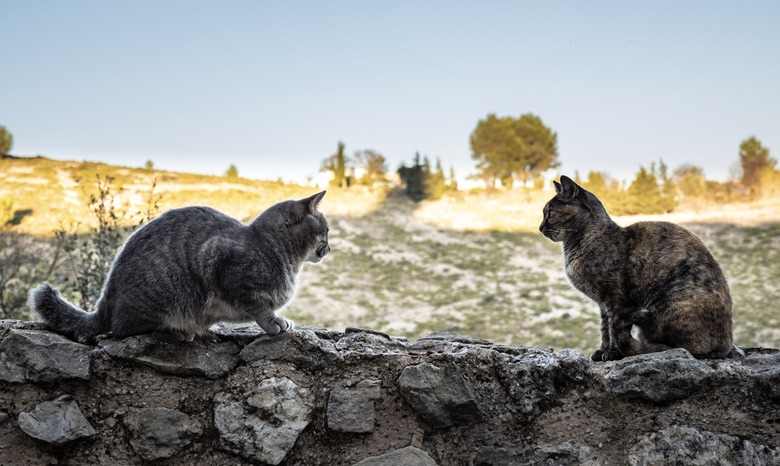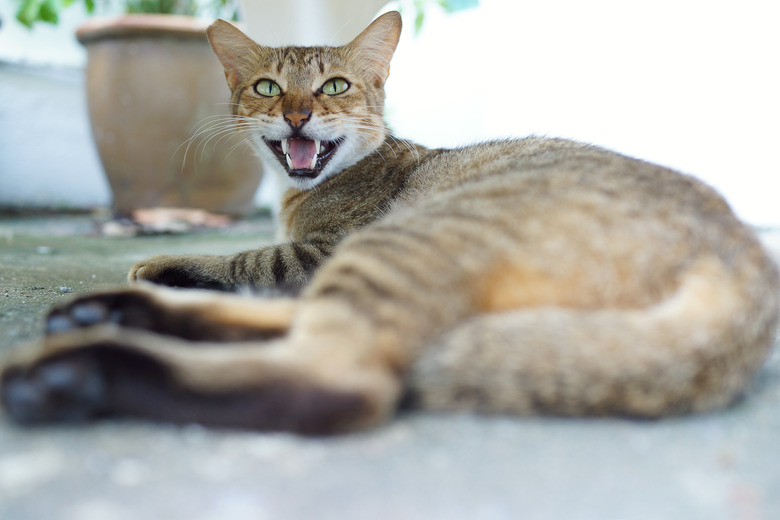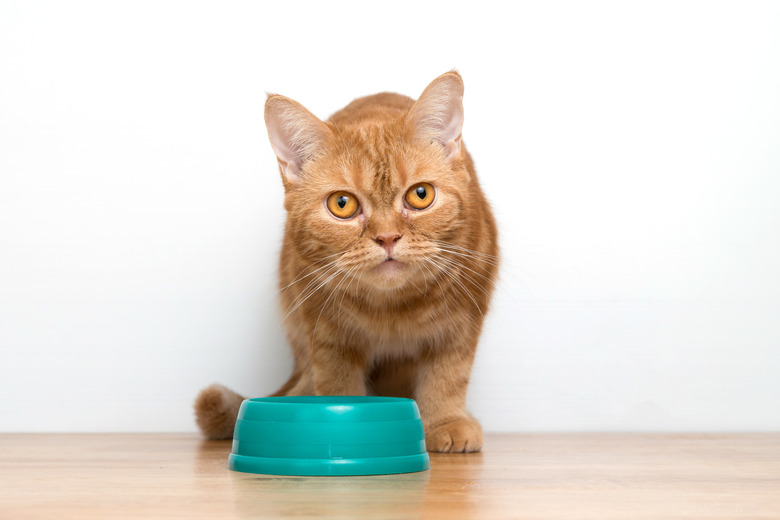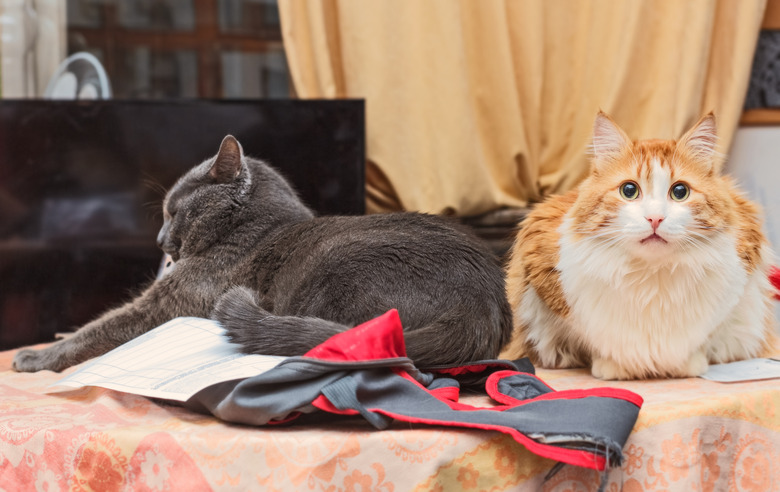Why Is My Cat Acting Aggressive Toward My Other Cat After A Vet Visit?
Cats are unique creatures with behavior that can be hard to understand. One of the odd things they do is act as if they don't recognize or don't like a cat that they are very familiar with. This is something that veterinarians call "non-recognition aggression" in cats.
The name of this phenomenon pretty well describes what happens: when two cats separate, for whatever reason, one cat doesn't recognize the other when they get back together. There are a few causes for this, and a few ways to deal with it, once determine that this is the cause of your aggressive cat.
What is non-recognition aggression?
What is non-recognition aggression?
The Tufts Catnip blog from the Cummings School of Veterinary Medicine at Tufts University considers non-recognition aggression as poorly understood. When cats in a multi-cat household are separated, such as when one cat returns from the vet or goes to another household for a while, the other cat can act aggressively and territorial toward the other cat.
This typically occurs when one cat visits the groomer, boarding facility, or veterinarian's office. After a bath or a vet visit that likely changes the cat's smell, other cats in the household may not view them as the same cat they know and love. Cats communicate so much using scent cues, that when a cat's normal scent is overpowered by medication, a bath, the smell of other animals, or the smell of another person handling them, other cats simply don't have enough scent cues to recognize them
Not only may other cats fail to recognize the returning kittie, but other resident cats may actually view them as a threat. If the cat that was taken away is also fearful, or perhaps sick, they may direct their fear toward the other resident cats, which just ups the vicious aggression cycle for all cats involved.
Aggressive cat behavior
Aggressive cat behavior
Dr. Laci Schaible confirms in an article for Embrace Pet Insurance that cats are believed to recognize other cats through scent, rather than physical appearance. Aggressive cat behavior common in a case of non-recognition aggression could include hissing and growling, and actual fighting. It may also include territoriality and refusal to share resources, such as the food, water bowl, and litter box.
If the returning cat is fearful, they may empty their anal glands. This is a normal behavior when a cat (dogs do this, too) is stressed, and while it simply smells bad to us, it indicates fear and danger to other cats. This smell can cause the other cats to react aggressively to the cat that released the odor, because it is perceived as a potential danger.
It may take a while before your cats are fully recovered from non-recognition aggression. It may take only a few hours, or up to two weeks. In more rare cases, it may take even longer for the balance of the household to return to normal. Luckily, there are a few things you can do ahead of time to prevent non-recognition aggression.
How to prevent non-recognition aggression
How to prevent non-recognition aggression
Scientific American says cats do seem to forget other cats when they are separated for a long time. If the cats have been living separate lives for a while and are suddenly back together, the aggressive cat may need to be reintroduced to the "intruder" cat as if they are meeting for the first time.
Follow basic advice for introducing cats, which, according to the Humane Society, typically includes keeping the newcomer and the resident cat separated by a door for a while, so that they can smell each other through the door but can't get to each other. Once their scents are familiar, they can mingle. Give the newcomer plenty of room to themselves, including their own litter box, food and water bowl, scratching post, toys, and a place to sleep until they are ready to fully integrate.
Beyond that, Embrace Pet Insurance recommends bathing both cats, so they both smell the same. If the cat who isn't recognized is well enough, bathe them after they return home to remove any veterinary smells or other unfamiliar smells, depending on the situation. Try taking both cats to the vet (or to whatever place is unfamiliar), so that both have the same experience. Another recommendation could be to take something from home, like their favorite blanket, and rub the returning cat with it before letting them into the house. This could give their fur that "familiar" home scent that may prevent non-recognition aggression from developing. Keep cats separate for a while through a closed door or other means until they re-familiarize with each other.
In conclusion
In conclusion
Non-recognition aggression occurs when cats are separated and don't seem to recognize each other when they return, leading an aggressive cat to act as if the returning cat is an intruder. This can manifest in many aggressive cat behaviors such as hissing, growling, and refusing to share the litter box or other resources like the water bowl.
This is not a clearly understood phenomenon, but it can occur when one cat returns from the vet, returns from the groomer, from a boarding facility, or from another home where they interacted with other humans and animals. It can take a few hours to a few weeks in more rare cases before the cats are fully recovered. You can help prevent non-recognition aggression by keeping cats separate until they have refamiliarized themselves.



